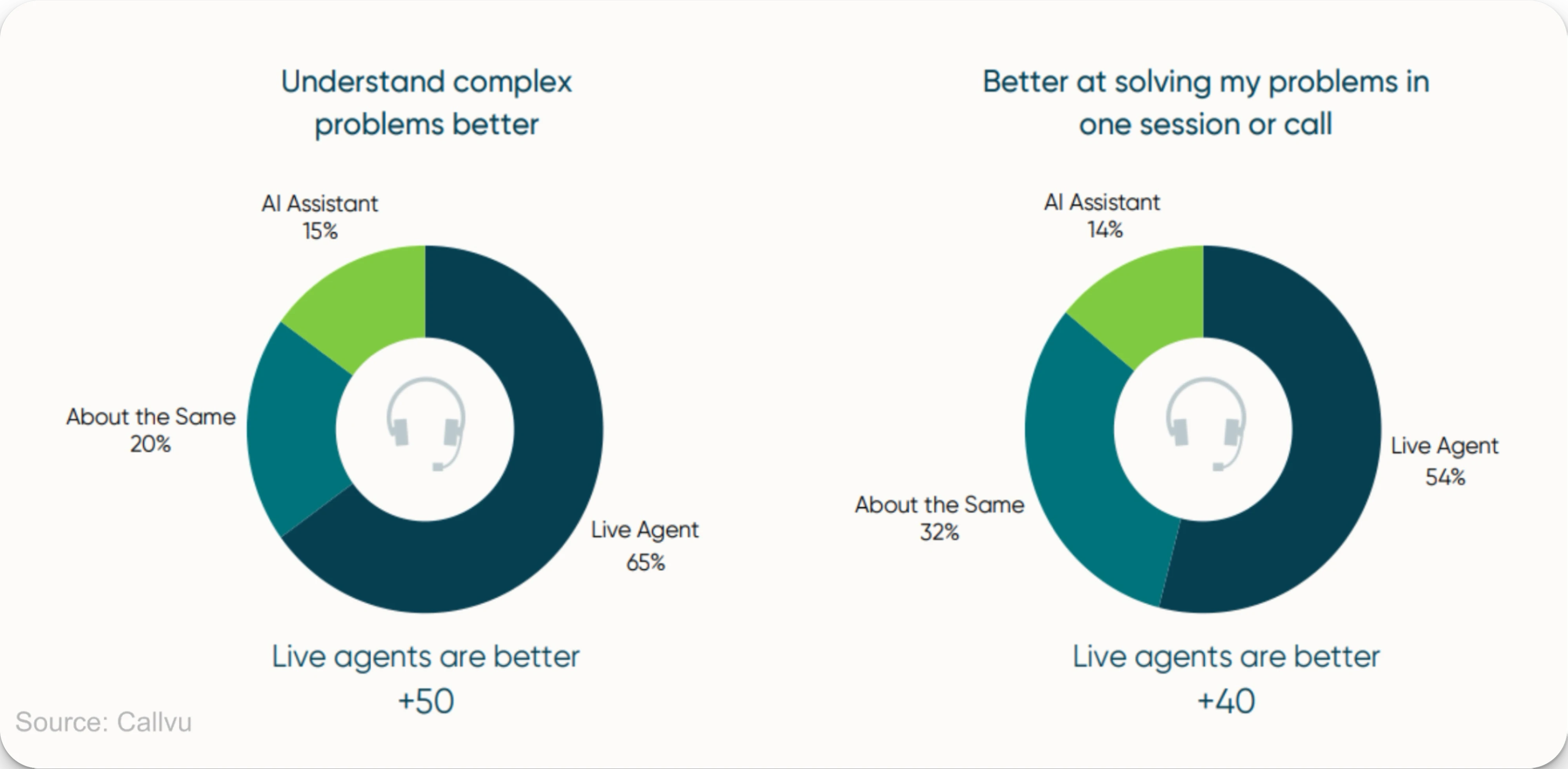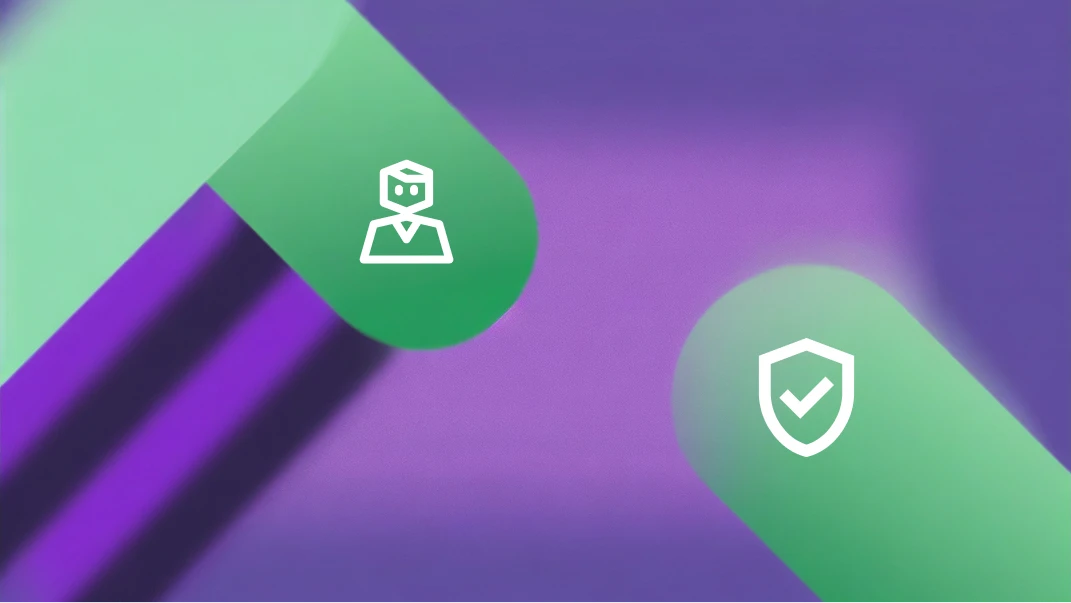Customer service chatbots that promise 24/7 availability, instant responses, and reduced operational costs seem like an ideal situation for both the customer and your business. Even so, a 2024 Callvu survey found that 81% of respondents would wait to speak with a live agent for at least a few minutes, versus engaging with an AI assistant immediately. This means that, if you want to incorporate a chatbot as part of your customer experience team, you need to make sure it works exceptionally well.
So, it’s not enough to build a chatbot and run a few pre-launch tests. You need continuous testing: an ongoing process that makes certain that your chatbot keeps doing what it’s supposed to do, even as the context grows more complex. The context might mean:
- What a customer is chatting about
- What the AI model provider has updated to
- What the last jailbreaks look like
If you’re integrating an AI model or using a third-party chatbot provider, you may have no idea when updates roll out or how those changes affect your customers. That unpredictability is why continuous testing is a must. And the good news? Genezio makes this process simple, even for without developers, so your team can detect and prevent problems before they cost you a customer—or your reputation.

What is continuous testing?
Continuous testing is the practice of automatically and repeatedly evaluating software (in this case, chatbots) throughout their lifecycle, not just before launch. Instead of testing once during development and hoping for the best, you set up a system that keeps checking how the chatbot performs as users interact with it and as updates roll in.
This is especially important for AI chatbots, which rely on large language models (LLMs) that are inherently probabilistic. Unlike traditional software, which follows fixed rules, LLMs generate responses based on patterns learned from massive datasets. That means, even a well-behaved chatbot might suddenly say something off-brand—or completely inappropriate—when asked a question it hasn’t seen before. And that’s assuming you’re in full control of the model.
Now imagine you’re not even building the AI yourself. Maybe you’re just plugging in an API from OpenAI, Anthropic, or another vendor. If that provider silently updates their backend, which happens more often than you might think, your chatbot’s behavior could change overnight. Without continuous testing, you’d have no idea this happened until angry customers start flooding your support lines or social media with screenshots.
Why AI chatbots are particularly vulnerable
Traditional customer service systems are relatively predictable. If you update a script or logic tree, you know exactly what’s going to change. But AI-driven chatbots are not deterministic. They can and will respond differently to the same question. That variability means even “safe” chatbots can become risky if you don’t monitor them constantly.
Let’s say your chatbot accidentally tells a customer their refund is guaranteed when it’s not. Or imagine it says something that gets flagged as discriminatory or biased. That’s a PR nightmare waiting to happen.
With continuous testing, you simulate a wide range of customer interactions on a regular basis. You can monitor for tone, compliance with policy, brand consistency, and overall effectiveness . And when something goes off the rails, you can catch it fast and fix it before it hurts your business.
The Klarna case
Klarna replaced 700 customer service agents with AI, froze hiring and assumed its chatbot could handle two-thirds of support requests. In 2024, CEO Sebastian Siemiatkowski proudly announced a nearly 50% reduction in workforce, largely thanks to AI systems taking over key customer support functions. But customers felt the drop in quality. Klarna reversed course in 2025 and started hiring humans again and promised customers they’d always be able to speak to a real person.
The lesson? Scaling AI too fast without proper and continuous testing can hurt your brand. Genezio helps companies avoid this by offering continuous evals for AI agents, no tech skills required, so your chatbot supports customers without risking revenue or reputation.
Continuous testing for AI chatbots with Genezio
Think about the cost of losing just a handful of loyal customers because your chatbot gave them bad advice. Or the hours your human agents have to spend cleaning up after a chatbot’s mistake. With Genezio, you can track how your chatbot performs across time, catch regressions early, and update your logic or prompts before they become liabilities.
And because Genezio supports easy integration with your existing chatbot stack, you can get started fast, even if your bot is based on a third-party API. You don’t want your bot to give wrong advice, guess about health issues, or leak personal information. Continuous testing helps teams check if the AI follows company rules, stays clear under pressure, and avoids confusing or risky behavior . Genezio also catches common problems like made-up answers or prompt injection attacks, and shows how often they happen across different chats.
Continuous testing with Genezio is simple. First, test it before it launches. You can do this by simply pasting your URL or connecting your agent directly. Genezio then runs scenario based simulations targeting different cases to see how your bet responds under pressure. This includes: confusing prompts, edge cases, hallucinations , multilingual instances and more. After it launches, Genezio keeps monitoring and reporting back to your team, so you’ll know when something weird is happening. If your agent goes off track, Genezio shows you why.
Ready to monitor your chatbot continuously? Try Genezio for free or book a demo now.
Article contents
Subscribe to our newsletter
DeployApps is a serverless platform for building full-stack web and mobile applications in a scalable and cost-efficient way.
Related articles
More from AI
Quality Monitoring Software: How To Make Sure AI Agents Benefit Support and Customers
Luis Minvielle
May 23, 2025






